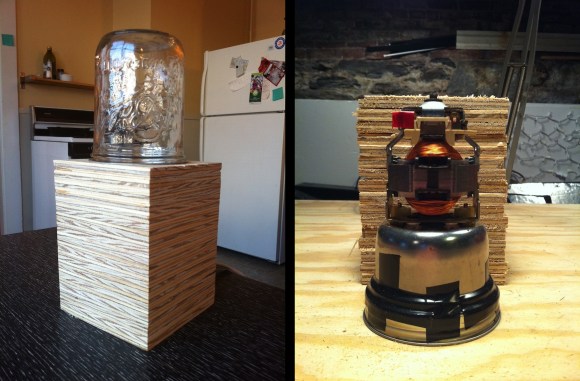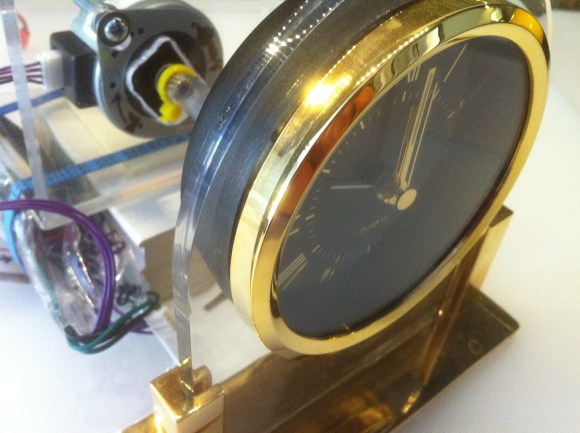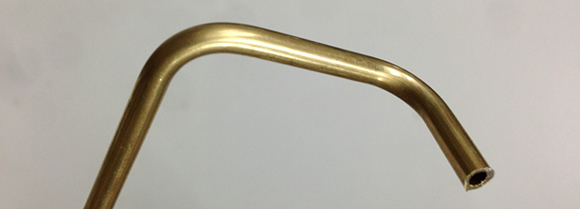
Instead of giving it up for dead, [Suprise Pink Mist] fabricated a replacement case for the motor and blade of his broken coffee grinder. The original enclosure was made of plastic, which didn’t survive being dropped. There isn’t an image of what those plastic parts looked like, but we have to think they were nowhere near as neat as the replacement.
The first step was to cut a set of plywood discs to the approximate outside dimensions. Since the base of the motor has several different diameters each disc had a void cut out of its center to match. The image to the right shows the motor sitting upside down next to the stacked plywood. The black electrical tape seals around the mason jar ring which was a perfect friction fit with the original bowl of the grinder. Once everything was glued together the outside edges were flattened on a belt sander and the mason jar was screwed in place to house the beans during grinding.
[via Reddit]

















